Click here to return to the main Levad Award page.

Nancy Merrill
Always an avid birder and conservationist, Nancy spent a 30-year working career as a family therapist in the Chicago area where she also served on the board of the Chicago Audubon Society. In 1999, Nancy and her husband purchased a small ranch along the Yampa River in Hayden, CO and began transforming this property (which they named the Yampavian Ranch) into a birding and wildlife haven. Today the Yampavian Ranch is under conservation easement with The Nature Conservancy. The bird list for the ranch consists of more than 156 species. In the spring the property hosts up to three Sandhill Crane nests, and in late summer/early fall, more than 200 cranes roost along the river that flows through the property. After moving fulltime to the Yampa Valley in 2001, Nancy helped establish and coordinate the Yampa Valley Birding Club. Over the years she served on the boards of the Yampa Valley Land Trust and the Community Agricultural Alliance. In 2012 Nancy co-founded Colorado Crane Conservation Coalition (CCCC) and the Yampa Valley Crane Festival. CCCC’s mission is to conserve and protect the Rocky Mountain Population of Greater Sandhill Cranes using science and education to connect people to this iconic species. The annual 4-day Yampa Valley Crane Festival educates the public about cranes and other avian species and the threats they face today. Nancy has served as president of the CCCC board from 2012 to the present. From 2014 to 2023, Nancy also served on the board of the International Crane Foundation (ICF), headquartered in Baraboo, WI. She has traveled extensively with ICF to study crane populations around the world. In 2019, she was a featured speaker at the First Poyang Lake Crane Festival in China. In 2023, Nancy was honored for her crane conservation work in Colorado with the “Good Egg” award by ICF and with the Everyday Hero award by ABC Denver 7 News.
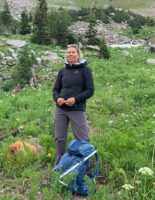
Amy Seglund
Amy has worked as a Species Conservation Coordinator for Colorado Parks and Wildlife since 2006. Though she obtained her graduate degree at Humboldt State University with an interest in mammalian carnivores, she found her passion for birds while working in Guatemala as a Peace Corps volunteer. Since returning from the Peace Corps, Amy has worked on various bird species projects with the Utah Division of Natural Resources and The Nature Conservancy. However, most of her dedicated work over the past 12 years has been for Colorado Parks and Wildlife and has focused on two alpine bird species - the southern white-tailed ptarmigan and brown-capped rosy-finch. Amy’s newest endeavor is to understand pinyon jay breeding biology. Besides Amy’s passion for birds, she has found much joy in working with her technicians and graduate students, teaching them the skills needed to become professionals in the wildlife field.
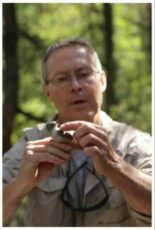
Brian Linkhart
Dr. Brian D. Linkhart is a Professor in the Department of Organismal Biology and Ecology at Colorado College, where he teaches courses in Ornithology, Ecology, and Field Biology. Brian’s research has focused on the population ecology of grassland and forest birds, particularly on Flammulated Owls, which he has studied in the Southwestern U.S. and Mexico since the early 1980s. Mentoring students and public outreach have been high priorities as well; over 135 Colorado College students have spent summers as research assistants, and many interested members of the public have participated in field seminars, workshops, and presentations over the years.
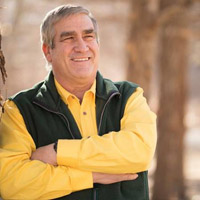
Robert Penner
Robert Penner is the Avian Conservation Manager for the Kansas Chapter of The Nature Conservancy. Among an extremely long list of avian-related activities, Rob oversees the management of the Cheyenne Bottoms Preserve, a site of hemispheric importance to shorebirds. He was instrumental is gaining designation for the preserve as a Wetland of International Importance through the Ramsar Convention and as a Globally Important Bird Area designation through the American Bird Conservancy and Audubon Society. He established long-term avian monitoring programs for shorebirds and grassland birds at the site, including conducting the International Shorebird Survey, Grassland Nesting Bird Survey and the Christmas Bird Count. He is Chair of the Western Hemisphere Shorebird Reserve Network-USA Committee and serves in various leaderships roles on the Western Hemisphere Shorebird Reserve Network Hemispheric Council, the US Shorebird Conservation Plan Partnership and the Midcontinent Shorebird Conservation Initiative. His public engagement work is equally impressive, helping create and launch the Kansas Wetlands Education Center, providing numerous field trips, talks and webinars, writing books and articles, and adding his enthusiasm and expertise to outreach events like the Wings & Wetlands Birding Festival, World Shorebirds Day and the newly-formed Kansas Birding Trails project. Most recently, Rob played a key role in the installation of two Motus Wildlife Tracking Towers at Cheyenne Bottoms—part of the Kansas Shorebird Radio Telemetry Project, and the first in Kansas. It is just another example of Rob's long list of avian monitoring, conservation and education contributions to benefit important stop-over and nesting habitat for migratory birds of the Great Plains.
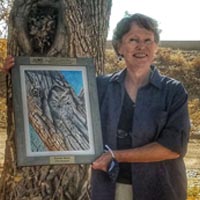
Karen Metz
Karen Metz, revered as Castlewood Canyon State Park’s 'Extraordinary Birder', has played a pivotal role as a champion for birds in her region for many years—including performing breeding bird surveys under Colorado Parks & Wildlife's Resource Stewardship Program, outreach efforts for the Raptor Education Foundation, raptor I.D. training for the Raptor Monitoring Volunteer Program, numerous published papers/articles, and more. Karen fell into bird conservation in the 1980s when she established a neighborhood bluebird trail near her new home in New Hampshire. During this time, she shared her experiences with Eastern Bluebirds in a series of annual letters to newspaper columnist Stacey Cole, who published them in his weekly nature column in the New Hampshire Union Leader. Her love of birds blossomed ever larger since then, and Karen has been a valuable source of information that has led to protecting the wildlife and natural features in Colorado's State Parks and beyond. Her commitment to bird conservation citizen science projects has provided valuable data and has encouraged others to do the same; and her desire to spread ornithological knowledge to other enthusiastic bird conservation-minded individuals is unequaled.
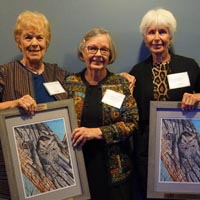
Sue Hirshman & Carolyn Gunn
For over two decades, Sue and Carolyn (pictured above with Karen Levad, center) have been tireless champions of Black Swifts and efforts to conserve this mysterious species. Combined, this dynamic duo have logged thousands of hours studying and observing Black Swifts and sharing their work with others through outreach, engagement and presentations at professional meetings. Their passion for this work involves trekking into remote locations well before dawn, enduring cold and wet conditions amid the waterfalls and cliffs that these birds call home, and countless hours of observation, recording and rigorous scientific analysis and research. Sue and Carolyn were major contributors to the discovery in 2012 of the wintering destination of Black Swifts—the rainforests of Brazil—which was previously unknown to ornithologists. Congratulations to Sue and Carolyn, and thank you for your incredible contributions to science and our understanding of ‘the Coolest Bird’ around.
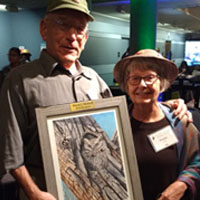
Wayne J. Mollhoff
Wayne (pictured above with Karen Levad receiving the award at Bird Conservancy's 2018 fundraiser) has made a huge impact on bird conservation in Nebraska since the early 1980s. He played a critical role in the creation of both of Nebraska’s breeding bird atlas (BBA) projects. His efforts on the 2016 edition included conceptual development and study design, project coordination, data collection and compilation, analysis, writing and interpretation, and production of the publication. He's also led comprehensive studies documenting Northern Saw-whet Owls in Pine Ridge, Wildcat Hills and elsewhere. Wayne's contributions were provided outside of his regular profession, and he frequently devoted personal resources to support the efforts. All the while, he shares his enthusiasm with children and their families across Nebraska, helping inspire and foster tomorrow's bird conservationists.
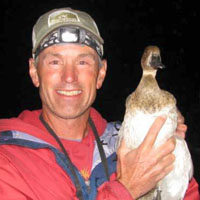
Pat Magee
Professor of ecology, Thornton chair of biology at Western State Colorado University, and founder of Sisk-a-dee, a non-profit focused on conservation of Gunnison Sage Grouse, Pat’s research has centered on the birds that live in western Colorado’s sagebrush and pinon-juniper habitats.
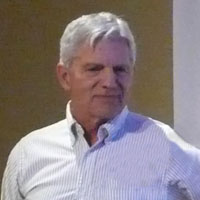
Nic Korte
Conservation chair for the Grand Valley Audubon Society, Nic has served as a conscience for the birding community in Western Colorado as he persistently gives voice to environmental and conservation challenges and successful leader of the Western Screech-Owl Monitoring Project for Grand Valley Audubon, resulting in strong owl populations.
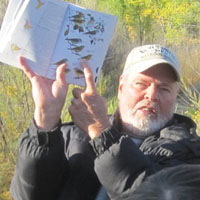
Coen Dexter
Field ornithologist and wildlife biologist and co-author of “Birds of Western Colorado Plateau and Mesa Country, Coen is a member of Colorado Field Ornithologists (CFO) and contributes quarterly to its “News From the Field”. Coen is foremost an educator and fully shares his detailed knowledge about habits, molt, song variations.
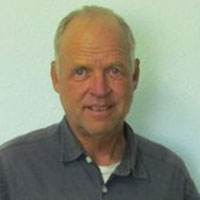
Duane Nelson
Biologist and Army Corp of Engineers contractor, Duane has worked for over 25-years in the study, management, and conservation of Least Terns and Piping Plovers in Colorado, especially at John Martin Dam and Reservoir where he clears invasive plants to enable both species to successfully breed.
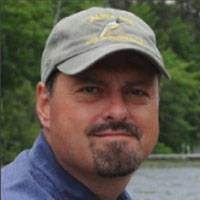
Larry Semo
Board Member of Rocky Mountain Bird Observatory, listing editor for American Birding Association, Colorado regional editor for “eBird” program, and an avian distribution and identification consultant for “Peterson Field Guide to Birds,” “National Geographic Society’s Guide to Birds” and “Sibley Guide to Birds.” Larry passed away in August 2011.
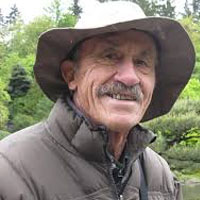
Hugh Kingery
Research director and publication editor of 1998 Colorado Breeding Bird Atlas I, Hugh has written several birding guides including Birding Colorado, and served as president of Denver Audubon Society, Denver Field Ornithologists, and the Colorado Mountain Club. Hugh and his wife, Urleen, teach a beginning and master birding classes for the Audubon Society of Greater Denver.
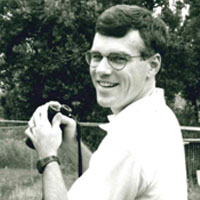
Mike Carter
Coordinator of the Playa Lakes Joint Venture, Mike was founder and executive director of the Colorado Bird Observatory (1988-2001) and is gifted in creating collaborative conservation efforts. He has given over 140 professional meeting presentations and published in such journals as Birding and Bird Conservation, The Auk, Audubon Field Notes, and Bulletin of the British Ornithologists’ Club).
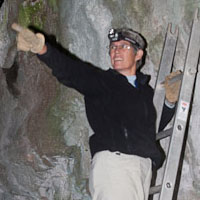
Kim Potter
A formidable partner with Rich on many ornithological projects, Kim co-authored “Birds of Western Colorado Plateau and Mesa Country” and joined him in studying the rare and elusive Black Swift, their most significant research endeavor, which was recognized in 2013 by the US Forest Service as it honored Kim for outstanding achievement in bird conservation with the Research and Partnership Award.
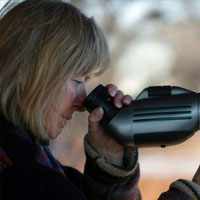
Nelda Gamble
Bald Eagle Watch coordinator since 1990, Nelda managed and served as visitor naturalist for this citizen science program started by Rocky Mountain Bird Observatory (RMBO) and Colorado Parks and Wildlife to view the nesting eagles at Barr Lake. She helped create RMBO’s first programs to teach schoolchildren and adults about birds and nature during spring field trips and fall bird banding at Barr Lake.
For more information
about the Levad Award,
please contact us.
Photo:
Rich Levad evaluates
Black Swift breeding
site. Photo by
Glenn Giroir

